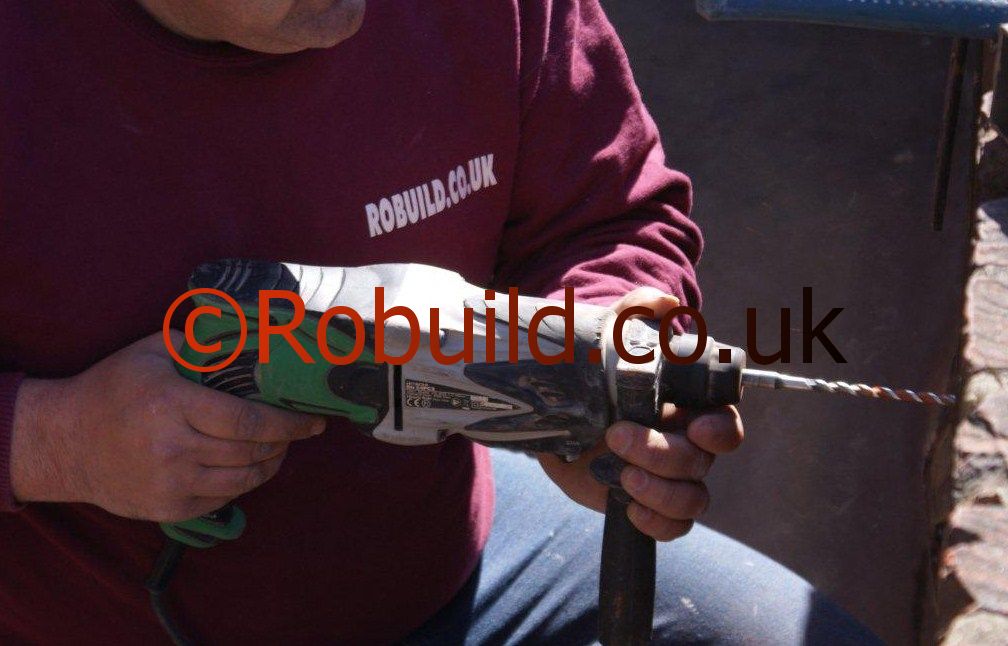Handy power drills do a lot more than just drill. A huge number of fittings can be attached to the basic drill unit, enabling it to do almost anything that can be done by a specialised power tool-perhaps not quite so fast or accurately, but certainly well enough for general use. Basically, a power drill is a compact electric motor fitted with a projecting shaft at one end on which is mounted a chuck-a revolving clamp that grips and drives drill bits or other attachments.

The motor unit is held in the hand by a pistol grip, and the motor is started by pressing a ‘trigger’ at the top of the grip. For safety reasons, the motor stops if pressure is released on the trigger, but most drills have a locking pin that can be engaged to hold the trigger in the ‘on’ position. Electric power is supplied to the drill by a cable that enters the machine through the bottom of the handle or by a battery. On all modern drills, a complex system of insulation is built in to keep the user from getting an electric shock. The motor is cooled by a built-in fan that draws air through slots in the side of the drill. These slots must be kept uncovered and free of sawdust, or the motor may overheat and burn out. Many drills can be adjusted to run at different speeds.
The normal type is a multi speed drill geared to run at up to 1,000 rpm and 2,500-3,000 rpm. The speeds are suitable for most household jobs, and a two speed machine is probably the best type for the householder to buy. Variable-speed drills, where the speed can be infinitely varied by an electrical device, are also made, but these are specialist tools. It is false economy to buy a single-speed drill and a separate electrical speed reducer, because although single-speed machines are cheaper, the cost of the two units together will be higher than that of a good two-speed dri1l. The most suitable speeds for various woodworking and other operations are shown in the table below. Drills come in various sizes, which are graded by the capacity of their chuck-i.e. the largest drill bit that can be fitted into it.
A medium-sized machine-say, should be adequate for all ordinary jobs, though the smallest may be too light for some. An indispensable accessory that every drill user will need is an extension cable. This enables the tradesman to use the tool in places remote from a power outlet. Cables are available in standard lengths from 8m to 100m, or you can make up your own. The longer the cable, the thicker it needs to be to prevent power loss. Heavier machines also need thicker cables. You must also have an isolating RCD if using a power tool out of doors; the shop that supplies the drill can advise you.
Drill bits and fittings

Many types of bit are sold for cutting different sizes and shapes of hole in different materials. The ‘everyday’ sort are twist bits, used for drilling all sizes of hole in metal, and holes in wood . Larger holes in wood are drilled with Jennings bits, which have a wide spiral to remove the surplus wood, and a centre spur or spike to keep the cut accurate when it is being started. They cut neat, flat-bottomed holes, but they have to be cleaned out more often than auger bits. Dowel bits are like twist bits with a wood-drill-shaped point for extra accuracy. Very large holes are drilled with flat bits. The flat bit has a flat, spadeshaped cutter with a central spur to hold it in place. The hole saw has a revolving toothed ring attached to a central twist bit the ring removes wood like a revolving pastry-cutter.
Different sizes of ring are available. Very long holes, such as those up the shaft of standard lamps, are drilled with shell or parrot-nosed augers. They are generally used on a lathe, and not in a hand-held drill. Other types of bit include countersink bits, for countersinking screw holes, and drill countersinkers, which are specially shaped to drill and countersink (or counterbore) a hole for a particular size of screw.
For drilling hard masonry, a hammer attachment to a drill is useful. This makes the bit vibrate up and down as it revolves.
Glass and tiles are drilled with a spear point drill, which also has a hardened tip.
